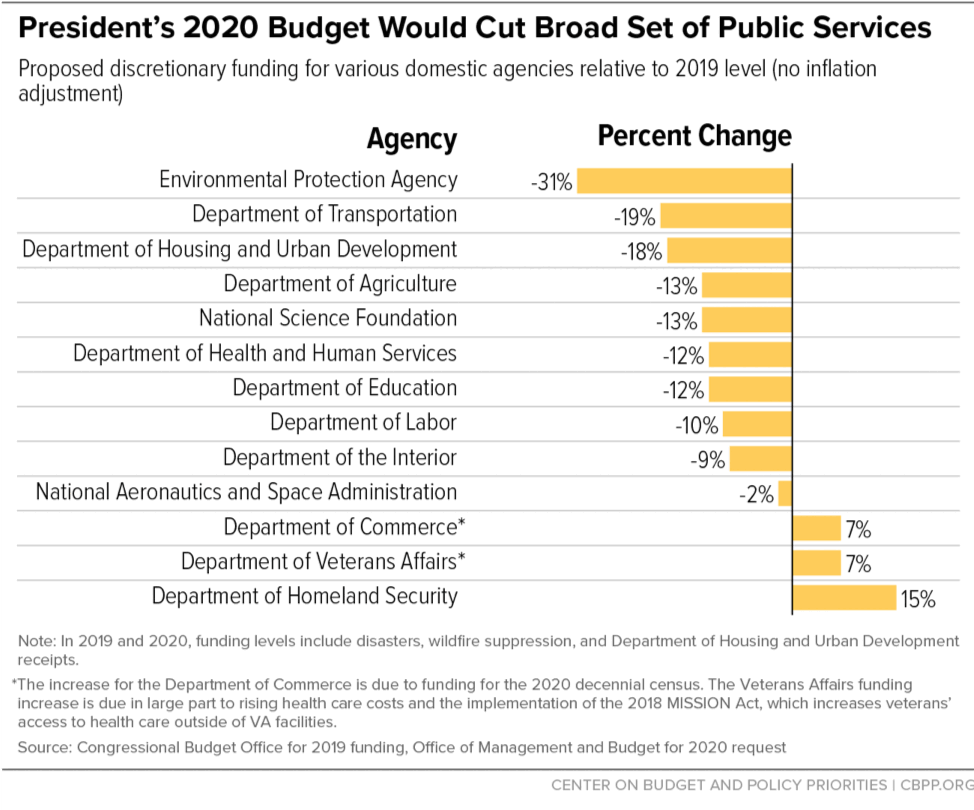BEYOND THE NUMBERS
Trump Budget: Non-Defense Discretionary Cuts Almost Twice as Big as the Budget Says
The President’s budget proposes to cut 2020 funding for non-defense discretionary (NDD) programs — a broad category that includes everything from education to veterans’ medical care, housing assistance, international affairs, and environmental protection — by 9 percent, or nearly twice as much as the 5 percent that the Administration says (as we explain below). The cuts are 11 percent in inflation-adjusted terms.
Moreover, the budget would continue to squeeze NDD funding in later years — by 2 percent a year after 2021. By the end of the decade, NDD funding would be 24 percent below the 2019 level, or 41 percent below in inflation-adjusted terms.
For 2020, the cuts to most agencies are larger than the overall figures suggest. That’s because the budget would boost spending for a few agencies, which would force larger cuts in others. In fact, while boosting the Department of Homeland Security by 15 percent next year, the budget would cut the Environmental Protection Agency by 31 percent and the Departments of Transportation and of Housing and Urban Development by 19 and 18 percent, respectively (see chart).
The Administration’s claim that the overall NDD cut for 2020 is only 5 percent is highly misleading, relying on an apples-to-oranges comparison of NDD funding for 2020 versus 2019. The problem is two-fold:
-
The first problem concerns funding for overseas contingency operations (OCO), which is supposed to cover war-related costs and doesn’t count against the annual caps on overall defense and NDD funding under the 2011 Budget Control Act (BCA). A small amount of OCO funding normally flows to the State Department ($8 billion in 2019), reducing the amount of NDD funding that the department needs. The budget eliminates this OCO funding for 2020. But the 5 percent figure doesn’t account for that cut and, as a result, hides its impact.
In addition, it’s worth noting, the budget treats OCO funding for defense in a dramatically different way. That is, while eliminating OCO funding for the State Department (which is an NDD-funded agency), the budget proposes a massive increase in OCO funding for defense in 2020 — which amounts to a backdoor way of boosting funding for core defense programs by sidestepping the BCA’s defense cap.
- The second problem concerns certain types of budget savings that the President and Congress typically enact each year to create more room for NDD funding within the BCA cap. The 5 percent figure accounts for the added NDD funding in 2020 that its savings proposals would permit. It doesn’t, however, account for the added NDD funding that the savings enacted in 2019 made possible. Through this misleading, one-sided approach, the budget made the cut between 2019 and 2020 look smaller than it actually would be under its proposals.

